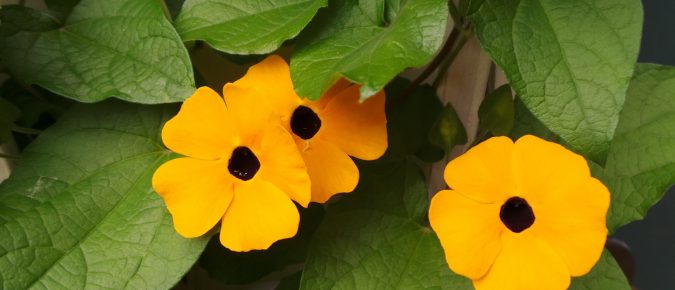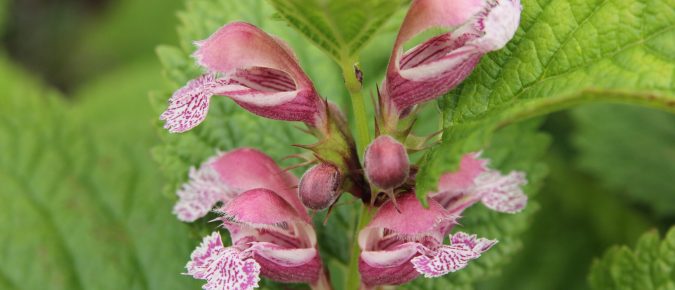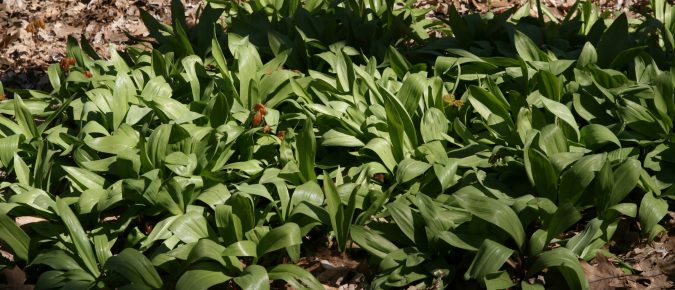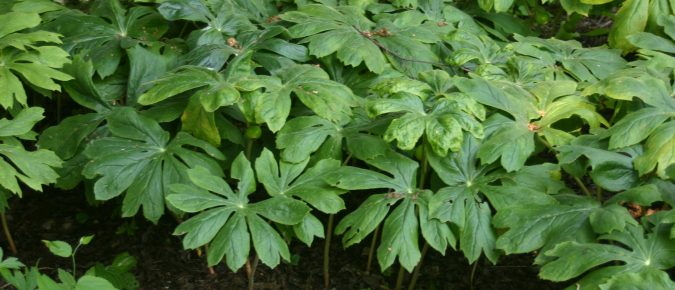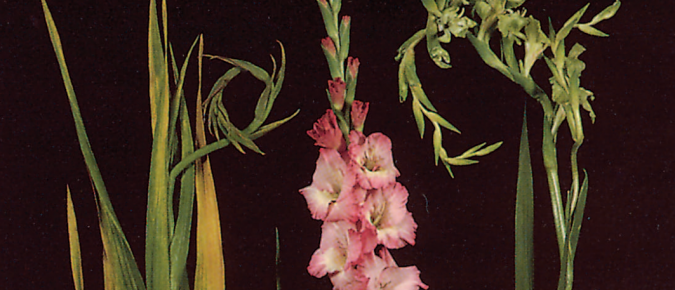Need to cover a trellis with color for the summer? Black-eyed Susan vine is a good choice if you want lots of showy flowers in the yellow and orange range. Thunbergia alata is actually a tender perennial that grows fast enough to be used as an annual in cooler climates. To learn more about this African native, read this article…
There are many weedy plants in the mustard family. It would be easy to overlook field pennycress early in the season, but once the distinctive seed pods develop with a bottle-brush-like appearance, and especially once they start to dry, this plant becomes much more noticeable. Learn more about this introduced weed by reading this article…
Not all Lamiums are created alike. The European species L. orvala is a tall, clump-forming plant with whorls of spotted purple-pink flowers that resemble orchids in spring. When the flowers fade the big leaves provide good contrast to grassy or fine-textured foliage in the garden. To learn more about this species of ornamental plant, read this article…
The beetles are the most numerous group of insects, with both pest and beneficial species. Regardless of whether they are plant feeders, scavengers, or predators, the adults all have the first pairs of wings hardened into sheaths that cover the abdomen. To learn about some of the most common types of beetle, read this article…
Those cheerful yellow flowers are everywhere in spring. Dandelion is a European species that has made itself at home throughout North America. A menace to gardeners and homeowners looking for a lush, green lawn, this plant can also be cultivated or foraged as food. You can find out more about this ubiquitous weed in this article…
There aren’t many native woodland plants that also double as vegetables, but the spring ephemeral Allium tricoccum is one. To find out more about this perennial plant, read this article…
Mayapple is a native wildflower with distinctive, deeply lobed, umbrella-shaped leaves. It forms dense colonies in open deciduous woodlands and other shaded sites. It can be a wonderful groundcover, outcompeting most weeds in a woodland garden or naturalized setting. To learn more about this unique herbaceous perennial, read this article…
Boston fern is a selection of tropical sword fern that has been used as an ornamental since Victorian times. Readily adaptable to growing in containers, it is a natural in hanging baskets and in elevated containers as a houseplant, but also can be used as a seasonal foliage plant in the garden. To learn more about Boston fern, read this article…
Learn how to plant and care for mums to keep them blooming from late summer through fall.
Viruses can destroy the value of a gladiolus crop. Serious infections have been observed throughout Wisconsin in some years. While Aster Yellows is common, it usually infects just a few gladioli scattered in plantings. This fact sheet covers the symptoms, causes, and means of control of viral and Aster Yellows infection.
Oak Wilt fungal disease kills oaks throughout Wisconsin every year.
This publication focuses on the red oak group and tells how to prevent, identify, and control this disease.
Cottony maple scale is an insect that can infest the twigs of maples and other shade trees with popcorn-sized cottony masses. This publication describes the symptoms, life cycle and management.

